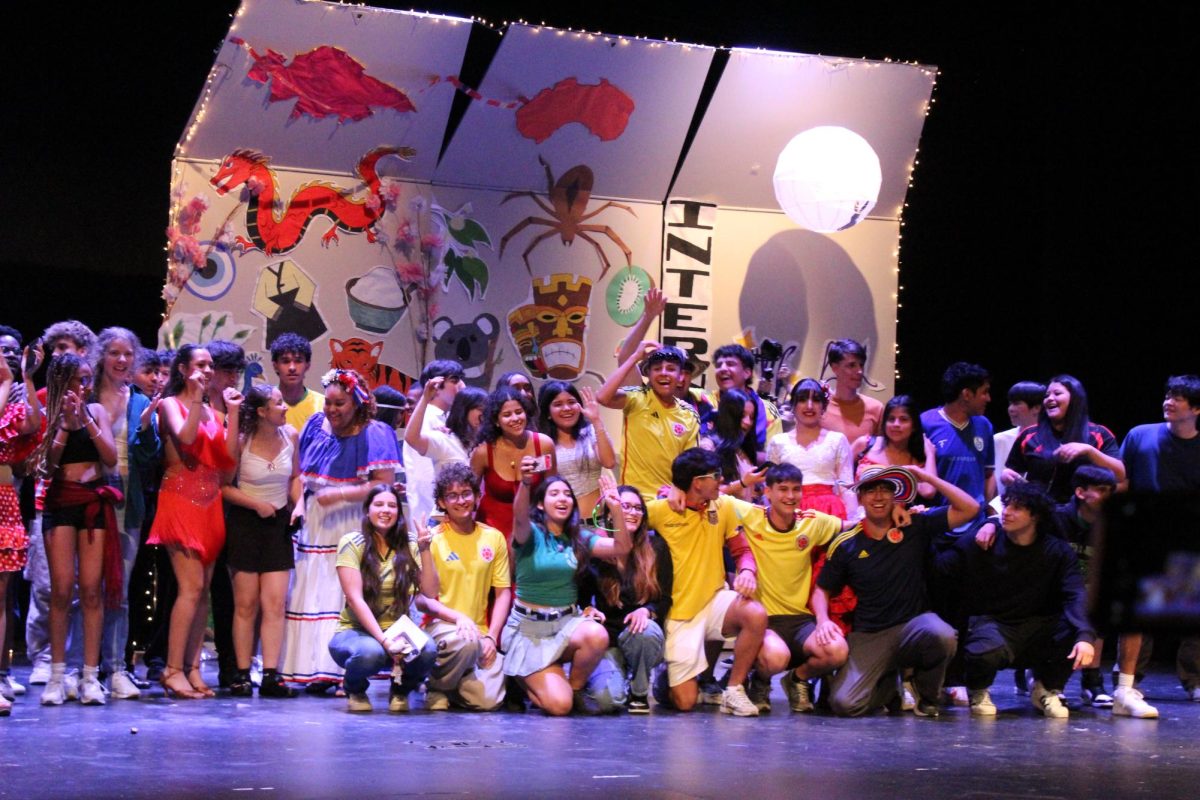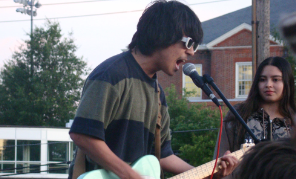The lights dim, the orchestra starts up and the ever-familiar Addams family tune fills the auditorium. The audience claps and snaps to the iconic beat while the cast members load up onto the stage, taking their spots for the opening act. A spotlight illuminates the center of the stage and the musical begins.
The conflict of the play is between Wednesday Addams and her mother Morticia, with Gomez stuck in the middle torn between his roles as a father and as a husband. Wednesday desperately wants to marry the morbid Lucas Beineke and invites his family over for dinner where the atypical Addams and standard Beinekes both experience major culture shocks.
Straight from the introduction song, the orchestra performed incredibly and every new song was as strong and clear as the last. This contributed greatly to the overall ambiance and elevated the quality of the play.
The choreography, though not overly intricate, was executed in a synchronized manner, a feat that isn’t easy to do with dances consisting of over 20 individuals. Two notable dance numbers included the opening number, in which the ancestors are brought back from the dead and perform an ensemble line dance, and the “Full Disclosure” dinner scene, where most of the dancing is done with the head and hands in time to the beat of the song.
Props looked very professional and included a walkable platform and an entrance from the back of the stage, as well as a torture chair that utilized sound effects. During a scene in the first act, a toy mouse zoomed across the stage, truly bringing the show to life. A creative touch to the play was the utilization of crew members dressed as butlers to move around props to smoothly advance from one scene to the next, which was an inventive workaround to a broken curtain system.
The wardrobe, though slightly less polished than the props, was in line with the standard depiction of the characters and had an impressive number of unique costumes for the ensemble cast, including a wardrobe change where an ensemble member became the moon, the love interest of Uncle Fester.
Perhaps the most surprising for a high school theater production was the generally tasteful and broadly appealing humor incorporated into the show. From jokes about setting a Jehovah’s Witness on fire to the mockery of an exaggerated traditional American family—even at dramatic points in the play—comedic relief ensured a pleasing experience.
However, the overly sexual nature of many of the songs and character interactions seemed out of place for an all-ages audience, though it is true to the traditional representation of the Addams family. An entire song between Morticia and Gomez was dedicated to the innuendo of “not getting some” from your wife, and the punchline of one of the jokes was that Morticia is a complex character who also happens to be a “gymnast in the bedroom.”
Still, both casts gave memorable performances and delivered the play in a way that spoke to the integrity of the original story.
From the Friday cast, senior Sam Blair gave a passionate performance as the Addams patriarch, with a sharp line delivery that enhanced the musical’s comedic elements and energetic mannerisms that further brought the character to life, although Blair’s Spanish pronunciation did leave much to be desired. The co-lead, Wednesday, who was played by sophomore Annabel Katek, gave another strong performance, with powerful vocals and facial expressions that emphasized the contrast that exists within Wednesday Addams.
Freshman Clifford Hubbard, who played Pugsley, also entertained with a theatrical performance, dishing out many humorous and witty lines, as well as a full song. While a character of few words, junior Schuyler Weir’s Lurch made their presence known through their hulking presence in what appeared to have been at least foot-tall platform boots. The occasional breaks in their stoic demeanor and enthusiastic participation in the dance numbers made for great laughs.
Fester, played by senior Bryan Kibet, who also played the first Saturday show, was a standout character, wowing the crowd with an energetic and comical performance. The role of Fester in the show was to break the fourth wall and talk directly to the audience, a gesture that made the play that much more engaging, especially in Kibet’s performance of Fester’s high-pitched and squeaky cadence.
In the Saturday cast, senior Andy Levin stole the show playing a flustered and overwhelmed family patriarch with perfect panicked tone shifts in both dialogue and song. Levin’s stage presence cannot be overstated, always shining in the spotlight through his animated dialogue and gestures. Opposite him was junior Neena Tavik’s brooding and sardonic Morticia, who filled their dialogue with cutting sophistication and sarcasm that completely fit the morose yet loving role the mother of the Addams is so well known for.
Outside of the Addams, senior Destini Haith played the relatively smaller but crucial role of Alice Beineke, the mother of Wednesday’s love interest, Lucas. In particular, during the show-stopping number “Waiting,” Haith displayed her vocal mastery alongside her impassioned movements and convincing expressions that she displayed throughout her career in the theater program.
Aside from these standouts, all members of the cast performed their roles well, there were few, if any, lagging points and the overall production was entertaining and enjoyable for viewers.

























